都是烈酒,为什么伏特加在西方更受欢迎?西方人觉得中国白酒难喝
白酒在中国是十分受欢迎的酒精饮品,尤其是在广阔无垠的北方地区白酒尤其流行,在寒冷的冬季喝点高度数白酒简直就是人间享受,身上瞬间充满了“洪荒之力”。
这一点俄罗斯人也深有体会,由于俄罗斯的气候过于寒冷,因此他们也发展出来国饮“伏特加”,俄罗斯人喝了伏特加敢和狗熊掰手腕子!
中国的白酒和俄罗斯伏特加同属高度数蒸馏酒,也就是我们平时说的烈酒,人喝多了极其容易上头,两种酒都能让人拥有飘飘欲仙的感觉。
可是,俄罗斯伏特加可以流行全世界,中国的白酒却被西方人评价难喝,如此优秀的酒为何会被给予如此之低,究竟是白酒真的差劲还是西方人不会喝!
世界上如此繁复的酒类其实归根到底还是酒精饮料,都是酒精和其它物质的混合物,从而达到各种风味,甚至还衍生出来各具特色的酒文化。
酒精其实并不是人类发明出来的,而是偶然之间在谷物和水果中发现的,人类的祖先很有可能就是通过吃腐烂的果子上头了,于是就发现了这个神奇的物质。
然后,上古时期的人们就彻底迷恋上了这种感觉,想着天天整点上头的玩意,于是人类就正式打开了酿酒之路,选择将腐烂的水果和谷子放在一起。
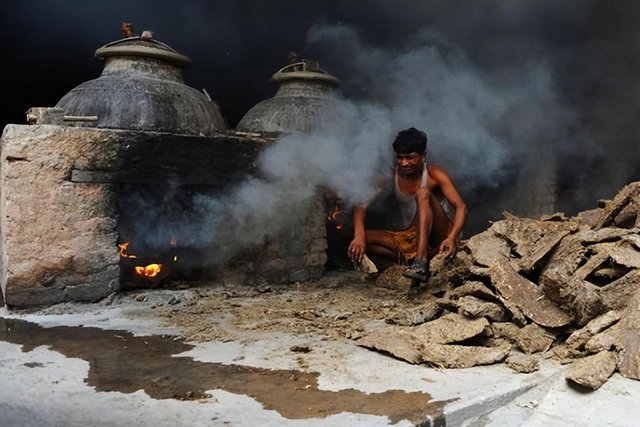
这种原始的酿酒方法成功率纯靠老天,密封的好的或许还能成酒,密封不好的顶多就是醋,甚至还有可能酿成有毒物质。
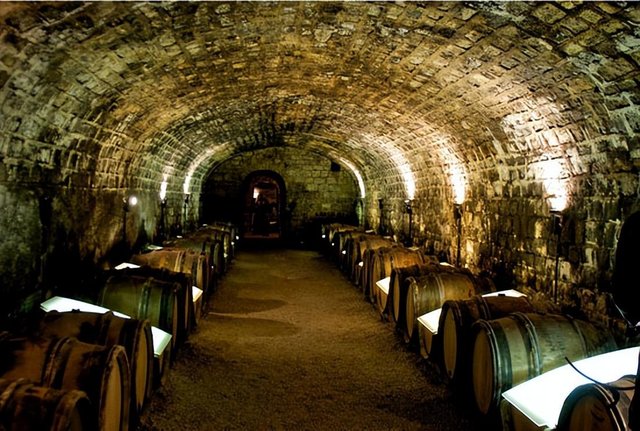
这种粗糙原始的水果谷物酒就是人类最早的酒,后期发酵工艺更新,人们可以精确的控制发酵过程,所以涌现出来许多种酒,这些水果或者谷物直接酿制的酒统称为酿造酒,一般度数较低,武松打虎喝的就是这种。
酿造酒的经典代表就是“米酒”、“黄酒”、“红酒”等,这些酒也是我们传统意义上流行的酒,也是汉人最优秀的酒精饮料。
这种酿造酒伴随着我们整个历史,包括红酒也是一样,早在唐朝其实非常流行喝葡萄酒,从唐诗中就可见一斑“葡萄美酒夜光杯,欲饮琵琶马上催”,可以看得出来红酒并不是西方的专属。
这种喝低度酿造酒的传统一直延续到明朝末年,直到满清入关之后才有所改变,游牧民族独爱高度数蒸馏酒,也就是白酒一类的。
蒸馏酒的工艺早在春秋时期就已经发明,是一种酒精提纯工艺,低度数的酿造酒无法满足部分人的需求,于是他们就想到了使用高温将原始酒体煮沸,然后通过冷凝装置将酒精提纯,利用酒精比水轻的原理,优先使酒精排出,这就是白酒的“酒头”了。
可是,当时的华夏民族认为这种酒味道不好,不仅辛辣无比,而且还是极其容易上头,容易对人产生损害,所以蒸馏酒并没有流行起来。
可是,这些游牧民族可没有“养生”那一套,啥玩意刺激他们就喝啥,啥酒上头快就喝啥酒,正好他们也是生长在苦寒之地,蒸馏酒正好暖暖身子。
而满清政权就是很标准的渔猎民族,他们与游牧民族非常相近,因此也是十分迷恋蒸馏酒,那种直冲天灵盖的感觉,让他们欲罢不能。
在清朝之后,蒸馏白酒很快就在华夏大地流行开来,成为了人们餐桌上的重要饮品,甚至成为了我们的国饮,尤其是酱香白酒,更是风靡全国各地,大家都以喝茅台为荣。

到了现代,人们追求刺激,温润的发酵酒不能满足口欲,强烈刺激的白酒就很对大家胃口,人们几乎都忘记了陪伴我们汉人几千年的发酵酒。
白酒受到我们的猛烈追捧,甚至还将很多品牌的白酒作为收藏品,价格一度被炒的飙升,直接形成了独特的炒酒文化,我们真的是把白酒爱到骨子里了。
而远在俄罗斯的伏特加也受到了当地人民的热烈追捧,战斗民族对伏特加的热爱不亚于我们对白酒的热爱,可是白酒和伏特加存在着本质区别。
西方人可以很好的接受伏特加,可是他们对我们的白酒却嗤之以鼻,难道我们千年的酒文化历史酿造的精髓比不上用红薯土豆粗暴发酵的伏特加?
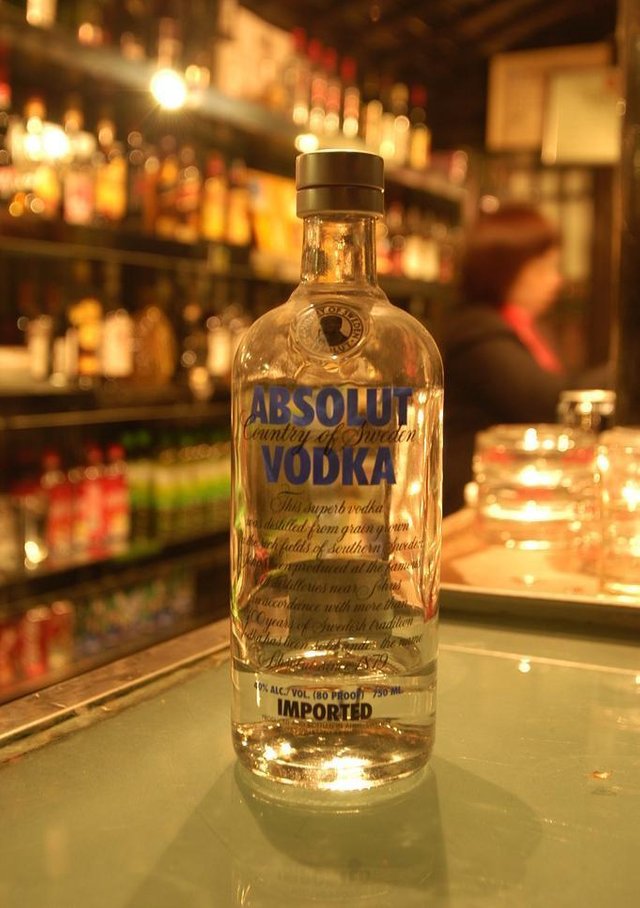
其实,西方人无法接受中国白酒的原因还是味道,西方社会也流行蒸馏酒,例如“威士忌”、“白兰地”、“龙舌兰”等,可是这些一般都是三十多度的酒,最高度数的也就是东欧伏特加,也就是五十度左右而已。
这些西方的蒸馏酒类跟我们的白酒相比,他们太素了,没有力量感。很明显西方人是吃青菜的胃,享受不了咱们中国的“大肘子”。
东西方酒类有着根本不同,西方主要还是以水果作为酿酒原料的,例如白兰地就是采用蒸馏葡萄酒提纯,酒体本身就有着很浓郁的果香气息,看起来也晶莹剔透,跟白酒的颜色一样,后期他们会将酒放入橡木桶中陈放。
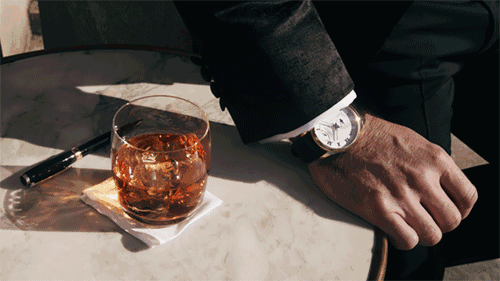
时间久了之后,透明的酒体就变成了淡黄色,也会沾染上橡木桶独特的焦糖香气,酒体的气息和风味十分复杂,而且度数也没有过分的高,主要看重的是味道。
这一点跟我们的白酒迥异,我们的白酒可以分为清香型喝酱香型,清香型香气比较芬芳,口感比较甘沥,最经典的代表就是二锅头。
清香型的白酒西方人还都能勉强接受,毕竟跟他们的本土酒类区别不大,但是到了酱香酒这个领域,西方人就完全接受不了,酱香的气味对于我们而言是浓郁厚重。
可是,这股子酱香气对于西方人这就是难以忍受的气味,他们完全无法理解为什么会有酒做成这个味道的,一点水果香气没有,取而代之的却是复杂而又冲鼻的酱香。
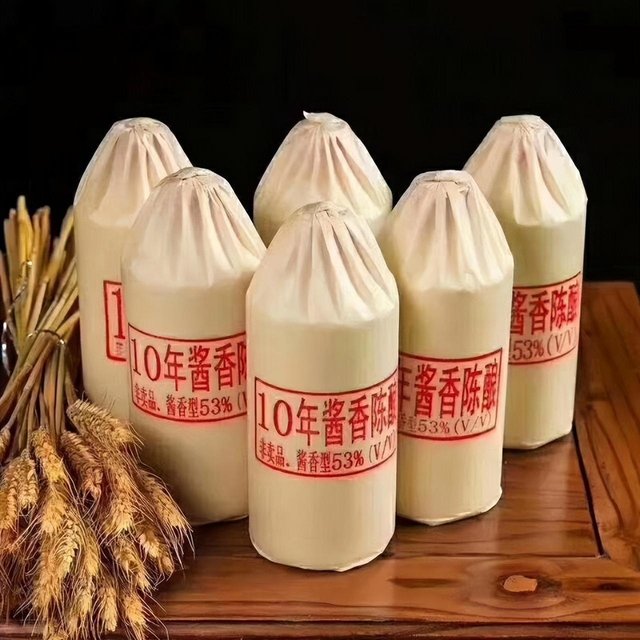
人体百分之八十左右的味觉都是来源于嗅觉,一款酒进嘴之前就得先过鼻子这一关,酱香酒的气味都令西方人无法接受的,更别提让他们喝下肚了,这不是要他们的命嘛!
而且,白酒不管哪个种类,都是不能冰镇或者直接加冰的,因为会直接影响就的味道,还会让胃部延缓对酒精的吸收,让人喝下远超自己酒量的白酒。
白酒不能加冰的特点导致西方人完全无法接受,毕竟他们无论喝什么酒都要冰镇一下,这样是基于西方酒的习惯,加冰更好喝。
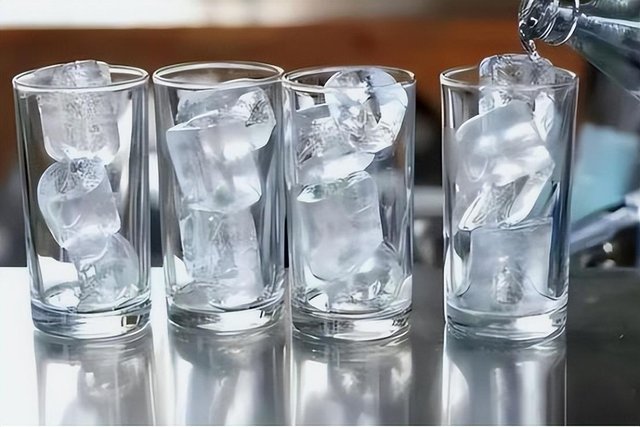
白酒在世界范围内都是无比特殊的存在,世界上没有跟白酒相似的酒类了,其实俄罗斯伏特加跟我们的白酒也不能混为一谈。
喝过伏特加的朋友都知道,伏特加看起来好像挺唬人,但是其实喝着味道并不是特别冲,没有什么独特的香味,说白了就是酒精兑水的感觉,这种特殊的性质使得伏特加成为调制鸡尾酒的宠儿,果汁里面加点没酒味的伏特加就是鸡尾酒了。
而且俄罗斯人常喝伏特加度数并不高,跟中国的白酒类似,都是五十度上下,那种96度的伏特加只是勾兑基酒而已,没人敢拿着“生命之水”对瓶吹,这种变态酒存在的目的仅仅是为了降低鸡尾酒的调制成本而已。
除此之外,西方人其实比我们更喜欢喝酒,他们日常酒精类消费远超东方国家,他们将喝酒看做成一种享受,就算没有气氛的烘托,他们也会微醺不止,所以他们更注重就的味道和品质。

而我们就不一样了,其实咱们中国人喝酒喝的就是个气氛,大家逢年过节欢聚一堂,总得喝点酒乐呵乐呵才行,一般很少有人独饮成性。所以,我们其实不太注重酒的味道,转而更加追求酒精给大家带来的欢乐气氛和愉悦。
大家对于酒的出发点不同,自然追求的东西也是不同,这也就造成了酒文化差异,大家只管喝自己喜欢的酒就行,没有必要非得逼着别人喜欢自己的酒。
我们在喝白酒的同时,也不能忘记伴随我们千年的酿造酒,那些温润的米酒黄酒葡萄酒才是最适合中国人体质的酒类,白酒其实就是游牧民族的“兴奋剂”而已。万事万物盛极必衰,白酒现在过于兴盛,当它的热度到达顶峰之后,绝对会向下直转的,到时候人们会重新爱上酿造酒。
"Spirit liquor, known as 'baijiu' in China, is an immensely popular alcoholic beverage, especially prevalent in the vast northern regions. Baijiu, particularly favored during the cold winters, offers a heavenly delight when consumed, imbuing individuals with an instant surge of 'primordial strength.'
Russians deeply understand this, given their own excessively cold climate, leading them to craft their national drink, 'vodka.' They say a Russian who's had vodka can wrestle a bear!
Chinese baijiu and Russian vodka both fall into the category of highly distilled liquors, commonly referred to as strong spirits. Consuming either in excess easily leads to intoxication, creating a sensation of ethereal bliss.
However, while Russian vodka enjoys global popularity, Chinese baijiu often receives unfavorable judgments from Westerners, questioning whether the baijiu is truly inferior or if it's simply a matter of Western palates being unaccustomed to it!
Despite the complexity of alcoholic beverages worldwide, they fundamentally remain mixtures of alcohol and other substances, delivering various flavors and giving rise to diverse drinking cultures.
Alcohol wasn't an intentional human invention but rather stumbled upon in grains and fruits accidentally. It's highly likely that our ancestors got intoxicated by consuming fermented fruits, leading to the discovery of this miraculous substance.
Thus, ancient humans became captivated by this sensation, desiring to experience this 'high' regularly. This marked the inception of humanity's journey into brewing, where decaying fruits and grains were intentionally combined to create alcoholic beverages."
The success of these primitive brewing methods relied entirely on nature. Well-sealed containers might yield drinkable alcohol, while poorly sealed ones might result in vinegar at best, or worse, the production of toxic substances.
The earliest alcoholic beverages crafted from fruits and grains using rudimentary methods marked humanity's first foray into brewing. As fermentation techniques advanced, allowing precise control over the process, a multitude of alcoholic drinks emerged. These directly fermented beverages from fruits or grains fall under the category of brewed liquor, generally possessing lower alcohol content. It's akin to what Wu Song drank when he slew the tiger.
Classic examples of brewed liquor include "rice wine," "yellow wine," and "red wine." These traditional drinks, widely embraced by the Han Chinese, represent some of the finest alcoholic beverages in our heritage.
The tradition of consuming these brewed liquors persisted throughout our history, even in the case of red wine. In fact, grape wine was quite popular during the Tang Dynasty. Lines from Tang poems like "Grape wine in the moonlight cup, longing to drink with the pipa playing," reveal that red wine wasn't exclusively Western.
The custom of imbibing lower-alcohol brewed liquors continued until the late Ming Dynasty. It underwent a shift only after the Qing Dynasty's conquest, when nomadic tribes favored highly distilled spirits like baijiu.
The technique of distillation, refining alcohol purity, was invented as early as the Spring and Autumn Period. It involved boiling the original fermented brew and then purifying the alcohol through condensation. Leveraging the principle that alcohol is lighter than water, this process prioritized alcohol separation, resulting in the creation of baijiu's potent "head."
However, the ancient Chinese deemed this type of alcohol unpleasant—extremely spicy and highly intoxicating, potentially harmful. Consequently, distilled spirits did not gain popularity.
Contrarily, the nomadic tribes cared less about the "health benefits" associated with drinking. They consumed whatever provided stimulation and quick intoxication. Being accustomed to harsh, cold climates, the warmth offered by distilled spirits suited them perfectly.
The Manchu Qing rulers shared similarities with these nomadic tribes, developing a strong fondness for distilled spirits. The heady sensation it provided was irresistible to them.
Post the Qing Dynasty, distilled baijiu swiftly gained popularity across the land, becoming a staple on dining tables and eventually evolving into our national drink. Especially renowned is the sauce-flavored baijiu, with Maotai being a source of pride for many, enjoying widespread popularity across the nation.
In modern times, people seek excitement, and the milder, fermented wines fail to satisfy their cravings. Strong, intense white spirits appeal more to the masses, leading many to almost forget the fermented wines that have accompanied the Han Chinese for millennia.
White spirits have been wildly embraced, with many brands even regarded as collectibles. Prices have soared, giving rise to a distinct culture of speculation around these spirits. It seems we've deeply ingrained our love for white spirits.
Meanwhile, in distant Russia, vodka also enjoys fervent local acclaim. The fervor of the Russian people for vodka matches our own passion for white spirits. Yet, fundamental differences exist between white spirits and vodka.
While Westerners readily accept vodka, they scoff at our white spirits. Does the essence crafted through millennia of our brewing culture pale in comparison to the rough fermentation of vodka made from potatoes or sweet potatoes?
The main reason why Westerners struggle with Chinese white spirits is the taste. Western societies do have their own distilled liquors, like "whiskey," "brandy," "tequila," and others, but these typically hover around 30 degrees of alcohol content. The highest proof they often have is Eastern European vodka, which is around 50 degrees at most.
Compared to our Chinese white spirits, these Western distilled liquors lack the same intensity. It's quite evident that Western palates lean towards lighter flavors. They're accustomed to a "vegetarian" taste, unable to appreciate our Chinese "hearty feasts."
Fundamentally, Eastern and Western liquors differ. Western liquors predominantly use fruits as their base material. For instance, brandy is distilled from wine, carrying rich fruity aromas and often exhibiting a crystal-clear appearance, much like white spirits. Later, they mature the liquor by aging it in oak barrels.
Over time, the clear liquor gradually takes on a pale yellow hue, acquiring the unique caramel aroma from the oak barrels. The complexity of the liquor's aroma and flavor profile emerges, with its alcohol content not excessively high, focusing primarily on taste.
This differs significantly from our white spirits. Our white spirits can be categorized into light aroma and strong aroma types. The light aroma variety boasts a fragrant scent and a slightly sweet taste, with the most classic representative being "Er Guo Tou."
Westerners can somewhat accept the light aroma white spirits since they're not too different from their local liquors. However, when it comes to the realm of strong aroma liquors, Westerners completely reject them. The rich, heavy aroma of strong aroma liquor is overpowering for us, but for Westerners, it's an unbearable scent.
For them, this particular scent of strong aroma liquor is intolerable. They simply cannot comprehend why a liquor would possess such a scent. It lacks any fruitiness they might expect and, instead, presents a complex, overwhelming aroma of strong essence.
Approximately 80% of the human sense of taste stems from smell. Before a sip of any drink reaches the mouth, it must first pass through the nose. The aroma of strong aroma liquors, such as Chinese strong aroma white spirits, is something that Westerners find intolerable, let alone drinking it. It's like asking them to risk their lives!
Moreover, irrespective of the type, white spirits should never be chilled or mixed with ice directly. Doing so significantly alters the flavor and slows down alcohol absorption in the stomach, causing individuals to consume amounts far exceeding their tolerance levels.
The inability to chill white spirits is a characteristic that Westerners utterly reject. In their view, every drink should be chilled, following their drinking habits, believing that it enhances the taste.
White spirits are an incredibly unique presence worldwide. There's no other liquor quite like it. Even Russian vodka can't be equated with our white spirits.
Those who have tasted vodka know that while it might seem intimidating, it isn't particularly harsh in taste. It lacks a distinct aroma and essentially feels like diluted alcohol. This unique quality makes vodka a favorite for mixing cocktails. Adding a bit of odorless vodka to juice creates a cocktail.
Furthermore, Russians commonly drink vodka with a relatively moderate alcohol content, akin to Chinese white spirits, hovering around 50 degrees. Those 96-degree versions of vodka are just base spirits used for blending, not intended for direct consumption. They exist solely to reduce the cost of mixing cocktails.
Additionally, Westerners actually have a higher alcohol consumption in their daily lives compared to Eastern countries. They view drinking as a form of enjoyment. Even without a celebratory atmosphere, they indulge in alcohol. Consequently, they prioritize taste and quality. On the contrary, Chinese people drink alcohol more for the atmosphere. Gatherings during festivals or celebrations often call for some drinking, and solitary drinking is uncommon. Hence, taste is less of a concern for us, while the joy and ambiance brought by alcohol take precedence.
Different starting points in approaching alcohol lead to diverse preferences, creating differences in drinking cultures. Everyone should simply enjoy the drinks they prefer without forcing others to like theirs.
While enjoying white spirits, we shouldn't forget the brewed liquors that have been with us for millennia. Those mellow rice wines, yellow wines, and grape wines suit the Chinese constitution best. White spirits are essentially an "excitement booster" for nomadic tribes. However, as with all things, when the enthusiasm for white spirits reaches its peak, it will surely decline. People will eventually rediscover the appeal of brewed liquors.